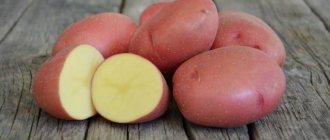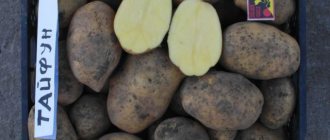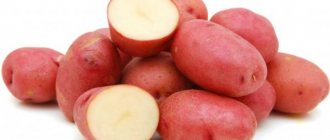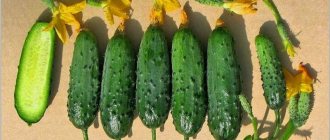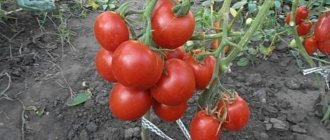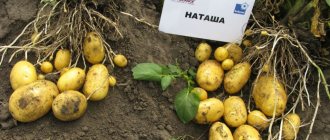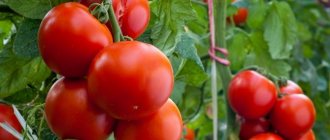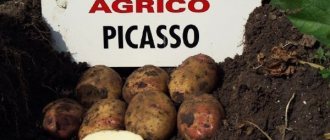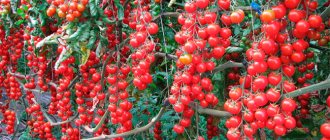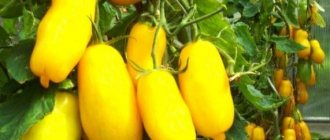Vegetable growing » Potatoes
0
1922
Article rating
Kira Stoletova
It's hard to believe that potatoes became a regular guest on our table just over three hundred years ago. Potatoes have come a long way to become recognized as one of the main plant foods. The Crohn's potato is a classic representative of this species.
Characteristics of potatoes of the Krona variety
It helped overcome frequent famines in medieval Europe, and is rightfully the second bread. It's funny that at first the tubers of this plant were used mainly for making moonshine. Nowadays, potatoes in various forms are included in the menu of any national cuisine. Dishes made from its tubers are appropriate on the table of both the poor and the aristocrat.
Potatoes "Krona": characteristics of the variety
| Variety name | Krone |
| general characteristics | mid-early table variety that grows successfully in any conditions |
| Maturation period | 85-100 days |
| Starch content | 9-12% |
| Weight of marketable tubers | 100-130 gr |
| Number of tubers in a bush | 10-15 |
| Productivity | 430-650 c/ha |
| Consumer qualities | high content of proteins, fiber, vitamins, carotene |
| Keeping quality | 96% |
| Peel color | yellow |
| Flesh color | yellow |
| Preferred Growing Regions | any soil and climate |
| Disease resistance | resistant to potato blight, common scab, rot |
| Features of cultivation | Pre-germination recommended |
| Originator | Bavaria-Saat (Germany) |
The main distinguishing features of this variety:
- medium-sized tubers, weighing from 100 to 130 g;
- oval shape, with a blunt apex;
- tubers are neat, balanced in weight and size;
- the peel is yellow, plain, thin, smooth;
- eyes are superficial, small, inconspicuous;
- the flesh is yellow when cut;
- starch content is moderate, does not exceed 12%;
- high content of proteins, fiber, vitamins, carotene.
The variety is distinguished by its productivity and low maintenance requirements; it can easily tolerate the lack of fertilizing or short-term drought.
You can compare the yield of this variety with others by referring to the table below:
| Variety name | Productivity |
| Crown | 430-650 c/ha |
| Kubanka | up to 220 c/ha |
| Felox | 550-600 c/ha |
| Sineglazka | up to 500 c/ha |
| Handsome | 170-280 c/ha |
| Red Scarlett | up to 400 c/ha |
| Borovichok | 200-250 c/ha |
| Bullfinch | 180-270 c/ha |
| Kamensky | 500-550 c/ha |
| Colomba | 220-420 c/ha |
| Spring | 270-380 c/ha |
Advantages and disadvantages
The main advantages of the variety include:
- high taste qualities of root vegetables;
- good yield;
- excellent keeping quality;
- earlier amicable ripening of tubers;
- disease resistance;
- not subject to mechanical damage;
- drought resistance;
- ability to tolerate heat and short-term drops in temperature;
- excellent presentation of root crops;
- low maintenance requirements.
No disadvantages were noticed in the variety.
Features of planting and growing
The Colette variety is an early ripening variety and ripens within 60-75 days after planting, which allows for two harvests per season. Many gardeners recommend intercropping. For example, Colette potatoes grow well with beans. They repel pests from each other and produce a more abundant harvest than individually.
Preparation
Before planting, the seed material is treated with drugs to stimulate growth and protect against diseases and pests. These are “Prestige”, “Cruiser”, “Albit”, “Force” and others. Germination and warming accelerate germination and increase the yield of Colette.
Only healthy tubers are taken for germination. They are placed in boxes and covered with humus, and watered with Gumi fertilizer on top. The top layer is covered with compost and covered with film. The boxes are left in a dark, warm place for germination.
Planting scheme and technology
It is better to plant tubers in rows with row spacing of 75 cm and a distance between plants of 30 cm. The depth of planting material may vary on different types of soil. On light soils, holes are made up to 10 cm deep, on heavy soils - no more than 6 cm.
When planting sprouted potatoes, ash and humus are poured into the holes. In this case, you can leave not 30, but only 25 cm between the bushes.
Features of cultivation
To get a high and healthy harvest, you need the right agricultural technology
Therefore it is important:
- Maintaining crop rotation. A good harvest will come from legumes, cucumber, zucchini, cabbage, garlic, onions, and green manure.
- Correct choice of soil. Loose fertile soils (light loams and sandy loams) are best suited.
- Regular moistening and weeding.
- Timely renewal of seed material.
Nuances of care
Hilling is carried out 2-3 times per season. The first time - after the appearance of 2-4 leaves. They will completely hide underground, which will protect the still weak and tender shoots from exposure to low temperatures at night. The next 1-2 hillings are carried out before the potatoes bloom, with a difference of 2 weeks.
Weed and loosen the soil as weeds appear. The first loosening is before the emergence of shoots, no deeper than 1-1.5 cm, otherwise the potato sprouts will be damaged. The following loosening procedures can be conveniently combined with hilling the bushes.
Watering mode
Watering is carried out if there is no precipitation. The soil should be moist, but not waterlogged. Colette's yield increases in well-moistened soils, so installing an automatic irrigation system is an ideal solution.
Top dressing
Colette potatoes are fed 3 times per season with the preparations “Nitrophoska”, “Sortvorin” or “Effekton”. The first feeding is when the tops are still thin and the leaves are light. The second and third times the potatoes are fed before flowering begins, with an interval of 10-14 days.
As for organic fertilizers, it is recommended to apply bird droppings in a ratio of 1:15 to water. The resulting solution is infused for 2 days in a warm place, then applied to moist soil. This should be done only in the evening, without touching the foliage, so as not to burn the plants. For 1 bush there is 1 liter of fertilizer.
Wood ash can be used in the following ways:
- In the form of feeding. 2 tbsp. l. ash is added under each bush during the first hilling and 50 g during the second hilling.
- For the prevention of late blight. Plants are pollinated with ash in wet weather 2-3 times during the flowering period, 15 g per bush.
Disease and pest control
The Colette variety is resistant to the golden cyst nematode, the causative agent of cancer, viruses A and Y, common scab, and blackleg. Has average resistance to leaf curl.
Susceptible to late blight on tops and tubers - this is the main disadvantage of the variety
To solve the problem, it is important to carry out preventive treatments with Ditan M-45, Kuproksat and adherence to crop rotation
Site selection
When choosing a site for planting potatoes on a hilly area, you should remember that southern and southwestern slopes are the most preferable. Such places are better warmed up by the sun's rays and are well lit. Despite the fact that “Krona” is capable of growing on different soils, the best conditions for it will be loose, slightly acidic, loamy and chernozem soils. The degree of acidity is easily determined by the flowers and herbs growing in the area. For example, the presence of chamomile, wheatgrass, clover and dandelion indicates that the acidity of the soil is optimal and the place is quite suitable for planting potatoes.
The groundwater level should also be taken into account. If the upper aquifers are located too close to the surface of the earth, then potatoes should be grown on specially formed ridges or high beds. We must not forget about the plant’s predecessors, the best of which are carrots, turnips, beets, cabbage and legumes. The limitation for planting “Krona” is the areas where tomatoes were previously grown.
Planting potatoes in the same place every year is unacceptable, as this leads to soil depletion and significantly reduces yields.
Preparation for planting potatoes begins a month before the start of work and consists of selecting planting tubers. To do this, you should sort through the material prepared in the fall and select healthy and even potatoes weighing from 50 to 80 g. Next, it is recommended to dip the selected tubers in copper sulfate diluted in water, then dry and spray with a growth stimulator. Then the tubers need to be laid out in boxes in 2 layers and placed in a bright room with a temperature of 22 Cº. To prevent too rapid germination, the temperature is reduced to 8 Cº at night. After 4 weeks, when the sprouts reach a length of 10-15 mm, you can begin planting.
Tubers should be planted at a distance of 30 cm from each other, leaving at least 65 cm between rows. If the area is large, then the distance can be increased. This will make it easier to care for potatoes and increase the overall yield of the crop. Planting should be done on soil heated to 10 Cº. At lower temperatures, eye growth slows down, and the timing of crop ripening may shift. As a top dressing, a single application of organic fertilizer is recommended in each hole, for which you can use ash, peat or diluted mullein. If planting is carried out in dry soil, half a liter of water should be poured into each hole.
Read also: Growing cucumbers in a greenhouse in winter
The crop does not require constant watering and does not require fertilization, but to ensure a high yield, a number of measures still need to be carried out.
Hilling
The procedure should be carried out after the length of the shoots reaches 15 cm. With earlier hilling, there is a risk of damage to the young plant, which in the future can lead to slower growth and a shift in flowering dates. Work should be carried out very carefully, trying not to touch the stem of the plant.
Hilling up too high can negatively affect the root system, expose it and expose it to the risk of damage by spring frosts. The event should be carried out immediately after rain or watering. This will contribute to the formation of stable ridges and prevent soil from crumbling. Repeated hilling is recommended 20 days after the first.
The crop tolerates short dry periods well, but still requires watering during budding. Low soil moisture can negatively affect the taste of potatoes and contribute to the appearance of a large number of small tubers. It is recommended to water strictly at the root of the plant, since drops on the tops can provoke the development of late blight. In such cases, it is convenient to use a drip irrigation system. In the absence of rain, at least three waterings will be required during the season.
Fertilizer application
Despite the fact that the variety does not require regular feeding, moderate application of fertilizers increases yield and improves the taste and nutritional quality of potatoes. Wood ash in combination with mature humus is considered the best and most affordable remedy. Horse manure is also a good type of feeding. Among fertilizers of mineral origin, it is better to use a phosphorus-potassium additive. The introduction of nitrogen-containing compounds is not recommended, as this contributes to the rapid growth of green mass and the consumption of nutrients and energy for its growth.
A week before digging potatoes, you should cut off all the tops. This will allow the tubers to absorb nutrients and significantly increase their nutritional value. It is recommended to thoroughly dry the harvested potatoes and store them.
Landing
The potatoes in question prefer crumbly, nutritious soils. Sandy loam or chernozem soil with neutral acidity is best suited for Christel.
Soil preparation
In September, the potato plot is dug up with a shovel, removing all the roots and insect larvae. Then the earth is pickled, according to the characteristics, with Trichopolum, or copper sulfate, and fertilized with a solution of mullein, or urea. 4-5 days before planting, the soil under Kristel is loosened again, thoroughly weeded, and humus or wood ash is added.
Landing Features
10-14 days before planting, Christel is sorted and germinated in a warm, dry room, in open boxes. Potatoes are planted, judging by the characteristics, in mid-April, in the South - at the beginning of the month. To add potatoes, choose a fine, but not too hot, windless day. The optimal distance between neighboring bushes of the variety is 45-50 cm. The recommended width of the space between the rows that Christel will require is 65-70 cm.
Comparison table with other species
| Name of potato variety | Average weight (marketable in grams) |
| "Crown" | 75–130 |
| "Sante" | 90–110 |
| "Manifesto" | 90–150 |
| "Innovator" | 130–150 |
| "Jelly" | 80–140 |
| "Colombo" | 80–130 |
| "Ilyinsky" | 50–160 |
Productivity
| Name of potato variety | Productivity (in tons per 1 ha) |
| "Crown" | 43–65 |
| "Sante" | 57 |
| "Manifesto" | 41 |
| "Innovator" | 32–33 |
| "Jelly" | 55 |
| "Colombo" | 22–42 |
| "Ilyinsky" | 18–35 |
Starch content
| Name of potato variety | Degree of starchiness (in%) |
| "Crown" | 9–13 |
| "Sante" | 10–14 |
| "Manifesto" | 11–14 |
| "Innovator" | 15 |
| "Jelly" | 14–18 |
| "Colombo" | 11–15 |
| "Ilyinsky" | 17–19 |
The best mid-early varieties
On average, you can get an excellent harvest of mid-early potatoes on the 70th day. Such varieties are highly resistant to infections, except for late blight. They have excellent commercial qualities, so they can be grown for sale.
Gala
This table variety was bred by German breeders and is grown in many regions of Russia. Allows you to obtain a high-quality harvest in almost any soil and climatic conditions, but it is necessary to carry out all agrotechnical measures correctly.
Gala has the following characteristics:
- on average the yield is 250 centners per hectare, but up to 420 centners can be harvested;
- the bushes grow of medium length, the leaves are large, and the flowering is weak (the corollas are white);
- tuber weight – 80-130 g, shape – round, smooth;
- the skin is yellowish with shallow eyes, and the color of the pulp can vary from light yellow to dark yellow;
- tubers are well suited for mechanical cleaning, do not darken or become soft;
- low starch content - 11-13%, therefore often included in the diet;
- commercial quality is up to 96%, so potatoes can be stored and transported for a long time.
The plant is well resistant to scab, but is often affected by late blight and rhizoctonia.
Red Scarlet
It is one of the most popular red-skinned table potatoes, often grown in the Central and Southern regions. It was bred by Dutch breeders. In addition, the yield is attractive - from 1 hectare you can collect 400-660 centners of tubers. On average, their size ranges from 85 to 120 g. They have an oblong shape, smooth, even skin, small eyes and yellow flesh. They do not change color either due to mechanical damage or after cooking.
Such potatoes are resistant to many diseases. So, he is not afraid of cancer, nematodes, late blight and leaf curl. In addition, the plant develops well in dry summer conditions. A disadvantage can be considered slightly below average resistance to viruses and scab.
Detskoselsky
Refers to productive table varieties with a growing season of 110-115 days. The bush grows of medium height with a colored stem and is well leafy. White corollas appear. In general, the plant blooms profusely, but for a short time.
The tubers themselves are of medium size - from 85 to 120 g. The starch content in them is 12-18%, and the protein content is 1.7-2%. They have light pink smooth skin and a flat oval shape. The flesh is white, but with small eyes. The plant is not afraid of cancer, but can be affected by late blight, common scab and the S virus.
Amorosa
It is also a table variety, which is distinguished by excellent taste and good presentation. Gives the best harvest with optimal moisture levels. Ripe tubers are oval in shape, large in size, red skin and yellow flesh. The level of dry matter in them is 19.5%.
The variety is resistant to Y-virus, leaf curl, and late blight of tubers. As a rule, it is affected by common scab, but late blight of tops is more common.
Marfona
This variety bears fruit with beautiful, uniform tubers that have medium-depth eyes, an oval shape, yellow skin and light yellow flesh that does not soften when cooked. Dry matter level – 18.7%. Tubers are not afraid of mechanical damage and can be stored for a long time.
The plant can develop in conditions of high air and soil temperatures. At the same time, it is resistant to viruses and late blight of tubers. A greater threat is posed by leaf curl and common scab, and an even greater threat is the nematode.
Romano
The variety was bred in the Netherlands. The bushes grow tall and leafy. The flowers are red-violet in color. The stem is straight and moderately colored with anthocyanin. The plant bears fruit with oval tubers weighing 120-180 g, starch content 10.5-13.8%, and protein content from 1.75 to 2.1%. Their skin is pink and the flesh is light cream.
The plant exhibits high resistance to cancer and Y-virus, moderate resistance to leaf curl, and weak resistance to late blight. To get a good harvest, you cannot do without additional processing.
Adretta
This table variety was brought to Russia from Germany. Its characteristics are:
- average yield – 450 centners per 1 ha;
- medium-sized bush with white corollas;
- the tubers are oval in shape and weigh 120-140 g;
- the peel is yellow and there are rare small eyes on it;
- the average starch level is 16%.
The plant is resistant to low temperatures and rot, but can be affected by scab, late blight, blackleg and rhizoctonia.
Agricultural technology
To grow healthy potatoes, you need to follow a certain number of rules. The variety will take root in many regions of Russia, as it is adapted to both cold and heat. If conditions are favorable, then, of course, you can count on better yields.
The growing season is short; from planting to harvesting potatoes, it takes about three months. The yield of the variety is good, but still depends mainly on the geographical location. From 1 g under normal conditions you can collect 650 quintals. Sand or black soil is suitable for growing this variety.
As for fertilizers, it is better to apply organic ones, and then only at the time of planting. To reap a rich harvest, it is necessary to carry out a number of activities such as watering, hilling and weeding. To avoid weeds, it is recommended to mulch the soil (for example, with sawdust).
Seed potatoes are thoroughly dried and germinated in a bright room. Before planting, large, healthy tubers that do not have obvious physical defects are selected. This way the harvest will be more abundant. Small potatoes are put aside, since it is not known what will grow from them. To keep the potatoes early, you can sprout them in advance. Thanks to this procedure, the growing season will be significantly shortened. When the soil warms up and the frost season has passed, the tubers are planted. If the temperature is even less than 10 degrees, the potatoes will rot. As fertilizer, the holes are filled with ash, humus or peat. This will increase your chances of a rich harvest. And nitrates will not accumulate. It is not recommended to apply nitrogen-containing fertilizers with quick release. A large amount of nitrogen will cause the green mass to gain strength, while the tubers will remain undeveloped.
The preferred planting distance is 25-30 cm, between ridges - up to 70 cm. Planting depth is no more than 5 cm. This will make it more convenient to weed and hill up potatoes. Hilling is carried out three times a season, weeding the bushes along the way. Form large ridges over the potato plant. No more fertilizer will be required. If desired, you can feed it with mullein.
Here watering plays an important role. Drip irrigation will come in handy. If you dry the soil, the bush will not die, but this will immediately affect the size of the potatoes. They will be small and inconspicuous. The flow of water should fall on the root system, but in no case on the leaves. This may lead to the development of late blight. It is characteristic of the tops of the Crown that it does not wither even in the fall. Green bushes stand out against the background of withered grasses for a long time.
Before digging, it is advised to get rid of the green part. The accumulation of nutrients in tubers depends on this. The dug up crop is dried on ridges under the sun or in a sheltered place under a canopy. Immediately after this, the tubers are sorted for the following purposes: for seed, for food, for sale, etc. Never store these categories together. One rotten potato can leave you without food for the winter and without planting material. It is most convenient to use nets rather than bags. The potatoes will be ventilated thanks to the holes. If there are potatoes that have not dried out, they will quickly get rid of moisture and will not lead to rotting of the entire bag.
Features of cultivation
Crohn's potatoes are also good because they can be planted in any convenient place, regardless of the type of soil. Standard agricultural technology is suitable, as well as all planting methods; you can do without fertilizing. The variety is suitable for beginners in gardening and for those who do not have the opportunity to often visit the dacha.
The groundwater level must be low, otherwise potatoes must be planted on ridges or ridges. Poor soils are enriched with rotted manure; organic matter must be added when digging.
Tubers must be germinated before planting. Hilling and watering are carried out at normal times. Krona potatoes tolerate short-term drought well, but during long hot periods they need timely moisture. With a lack of water, a large amount of fines is formed in the nests. The variety is fed rarely, moderately, and nitrogen-containing fertilizers are not used.
Krona is a relatively new, promising potato variety, which already covers 35% of the market. Versatility, keeping quality, good taste, coupled with particular unpretentiousness and undemanding nature make this variety incredibly popular. Large organizations involved in the sale of potatoes, as well as owners of small lands, give Krona exceptionally good reviews, which means it really deserves attention.
Maria. After hearing a lot of praise about Krona from a neighbor, I decided to plant it at my place; I had never been involved in cultivation before. The garden is located in a lowland near a pond, the humidity there is always high, I planted it on ridges, but I didn’t really hope for a good result. Over the entire season, I watered the beds only 3 times, hilled the bushes twice, did not fertilize, when they started digging, there was no limit to surprise. The potatoes were large, beautiful, one to one, there were at least 10 in each hole. I’ll take a break for a couple of years, cultivate it a little, expand the plot and plant Krona again.
Eugene. I learned about Krona 4 years ago, for the first time I bought some tubers for testing, and now I’m allocating the largest areas to the variety. Immunity to diseases and weather changes is high, but pest prevention is needed. The work takes a lot of time, I try to grow the most unpretentious varieties of vegetables, Krona is ideal in this sense, I recommend it to all “weekend” summer residents. Yields remain high even in years with particularly bad weather.
https://youtube.com/watch?v=vr2xTD6ncDc
Potatoes "Krona": characteristics of the variety
| Variety name | Krone |
| general characteristics | mid-early table variety that grows successfully in any conditions |
| Maturation period | 85-100 days |
| Starch content | 9-12% |
| Weight of marketable tubers | 100-130 gr |
| Number of tubers in a bush | 10-15 |
| Productivity | 430-650 c/ha |
| Consumer qualities | high content of proteins, fiber, vitamins, carotene |
| Keeping quality | 96% |
| Peel color | yellow |
| Flesh color | yellow |
| Preferred Growing Regions | any soil and climate |
| Disease resistance | resistant to potato blight, common scab, rot |
| Features of cultivation | Pre-germination recommended |
| Originator | Bavaria-Saat (Germany) |
The main distinguishing features of this variety:
- medium-sized tubers, weighing from 100 to 130 g;
- oval shape, with a blunt apex;
- tubers are neat, balanced in weight and size;
- the peel is yellow, plain, thin, smooth;
- eyes are superficial, small, inconspicuous;
- the flesh is yellow when cut;
- starch content is moderate, does not exceed 12%;
- high content of proteins, fiber, vitamins, carotene.
The variety is distinguished by its productivity and low maintenance requirements; it can easily tolerate the lack of fertilizing or short-term drought.
You can compare the yield of this variety with others by referring to the table below:
| Variety name | Productivity |
| Crown | 430-650 c/ha |
| Kubanka | up to 220 c/ha |
| Felox | 550-600 c/ha |
| Sineglazka | up to 500 c/ha |
| Handsome | 170-280 c/ha |
| Red Scarlett | up to 400 c/ha |
| Borovichok | 200-250 c/ha |
| Bullfinch | 180-270 c/ha |
| Kamensky | 500-550 c/ha |
| Colomba | 220-420 c/ha |
| Spring | 270-380 c/ha |
External characteristics
Medium tubers weighing 100-130 g are endowed with yellow flesh. They have an oval, smooth shape. The yellow peel of a single color is easily visible due to its thinness. The eyes of mid-early potatoes are barely noticeable. The amount of starch in a vegetable is average and often does not exceed 12%. Potatoes also contain vitamins, proteins and fiber. The variety is unpretentious and does not require special care. The bush itself is low, erect, and the green mass is sparse. The leaves are dark green in color, small in size, the edges are curved in a wave, and the veins are clearly defined. The small corolla consists of white flowers that quickly fall off. There are practically no berries on the bush. The Krona variety is famous for its powerful root system. Each bush produces up to 15 tubers. There are very few small, underdeveloped potatoes.
Disease Prevention
The crown has good immunity to many diseases that can easily affect other potato varieties. The plant is not susceptible to rot, common scab, potato cancer and viral infections. Green mass and tubers are rarely affected by late blight.
To protect potatoes before planting, root crops must be treated with Bordeaux mixture or copper sulfate solution. The soil needs to be watered with a disinfectant. It is advisable to change the site for planting this crop every year.
Young leaves and stems can be parasitized by: aphids, Colorado potato beetles, spider mites and cicadas. To protect potatoes from them, it is necessary to promptly remove weeds and mulch the soil. In case of massive damage, the plant needs to be treated with insecticides, which must be applied before flowering begins.
Diseases and pests
The variety is resistant to many diseases: various viruses, potato cancer, and common scab.
Early ripening saves tubers and leaves from late blight. For prevention, root crops are treated before planting, and the soil is spilled with disinfectant compounds. At the peak of the late blight epidemic, plantings are treated once with copper-containing preparations .
Description and photo
Potato variety "Krona" table, mid-early. About 100 days pass from planting to harvesting. The yield is very high, depending on climatic zones and growing conditions, ranging from 430 to 650 centners per hectare.
The collected tubers are perfectly stored and can be transported. Read more about storage times and temperatures, and about possible problems that may arise.
And also about how to store root vegetables in winter, on the balcony, in boxes, in the refrigerator, peeled.
The seed material does not degenerate, retaining all the properties characteristic of the mother plants.
Potatoes are very easy to grow. Prefers light soils based on black soil or sand. Frequent feeding is not needed; when growing, you can get by with moderate portions of organic matter added before planting. Read more about how to fertilize potatoes, when and how to fertilize, and how to do it correctly when planting.
For maximum yield, good soil moisture, hilling and timely removal of weeds are required. Mulching will help control weeds.
Bush of medium height, erect, moderately spreading. The formation of green mass is average. The leaves are dark green, matte, medium-sized, with slightly wavy edges and clearly defined veins. The corolla is compact, collected from large white, quickly falling flowers. The berries practically do not set.
The root system is powerful, 10-15 potatoes are formed under each bush. The amount of non-marketable fines or substandard tubers is minimal.
The variety is resistant to many nightshade diseases: potato blight, common scab, root and blossom end rot. Rarely affected by late blight. Potatoes are insensitive to mechanical damage.
The taste of Krone potatoes is excellent. The tubers are slightly boiled, maintaining a neat shape. The taste is rich, balanced, not watery. Due to the low starch content, the tubers do not darken when cut, maintaining a beautiful yellow color.
In the table below you will find data on the starch content of different potato varieties:
| Variety name | Starch content |
| Crown | 9-12% |
| Manifesto | 11-15% |
| Tiras | 10-15% |
| Elizabeth | 13-14% |
| Vega | 10-16% |
| Lugovskoy | 12-19% |
| Romano | 14-17% |
| Santa | 10-14% |
| Tuleevsky | 14-16% |
| Gypsy | 12-14% |
| Fairy tale | 14-17% |
Potatoes are suitable for deep-frying, stuffing, and baking. The tubers are not used to make puree. Can be industrially processed to make frozen French fries, soup dressings or mixed vegetables.
Potatoes "Krona" look like in these photos:
Reviews about the variety
Potatoes of the Krona variety are quite popular among consumers due to their rich, balanced taste. Root vegetables are not watery, slightly boilable, and retain their shape after cooking. The low starch content does not allow the tubers to darken when cut, without losing their beautiful yellow color. Gardeners love this variety because of its undemanding nature in agricultural technology. It can be grown both on an industrial scale and on personal plots.
Secrets of growing potatoes:
Potato variety "Krona" is a promising variety that is ideal for sale. Large, neat root vegetables that attract attention are sorted and packaged directly at the collection site. The harvested crop is perfectly stored, maintaining commercial quality for several months.
Potatoes: studying varieties for an excellent harvest
About 300 potato varieties are officially registered in Russia. Favorite varieties at our dachas lose their properties over time. And there is only one way out - to update them in a timely manner.
The ideal frequency of variety replacement is every 7 - 8 years. The main Russian potato breeder is the All-Russian Research Institute of Potato Farming named after. A.G. Lorkha", which began its history in the village of Korenevo, Moscow region back in 1919. This institute not only creates new varieties, but also monitors the conservation of valuable species, the spread of diseases and gives recommendations on growing second bread in a particular region.
Potato varieties according to ripening time can be divided into the following:
- early - ripening period is 80 - 90 days from the date of planting. This group includes the varieties “Red Scarlett”, “Zhukovsky Early”, “Udacha”, “Lomonosovsky” and “Strong” that are popular among our summer residents;
- mid-early - ripen in 90 - 100 days. These are the varieties “Adretta” and “Nevsky”, familiar to many for a long time, as well as “Dannaya”;
- mid-ripening - ripen in 100 - 110 days. These include the popular variety “Lugovskaya”, as well as “pennant”, “grand”, “Ladoga” and “cascade”;
- medium late - the harvest can be obtained in 110 - 120 days. These are the varieties “inspiration” and “ragneda”; - late ones - they ripen for more than 120 days, they are not recommended for growing in our climate.
It should be remembered that early and mid-early varieties are more capricious. You will have to work hard on them: you must germinate them before planting and water them. In addition, these varieties are not intended for long-term storage and are less resistant to diseases and pests. For autumn-winter consumption, it is better to grow mid-season and mid-late varieties.
When purchasing potato seeds on packages or in the description, you can see another option for dividing varieties - according to the degree of boiling:
- type A - tubers do not boil. Such potatoes are used for making salads, soups, etc.; - type B - the tubers are slightly softened and crack slightly when cooked. These varieties are used for making soups and frying; - type C - the tubers are very boiled; - type D - the tubers are overcooked. Potatoes are used only for making mashed potatoes.
By the way, in our country they prefer type C varieties, but in European countries they prefer type A varieties.
Before purchasing seed potatoes, remember that so far there are no varieties on planet Earth that are resistant to the Colorado potato beetle. Better focus on varieties that are resistant to the most common “sores” in our region: late blight, nematode, scab and potato cancer.
Harvest and storage
With proper care, the first potato harvest is harvested at the end of June - mid-July, depending on the region. The signal to start harvesting is the drying tops. They dig up bushes by hand or using special equipment.
After harvesting, the soil is weeded, cultivated and watered. Then they begin planting again. Care measures are the same as when growing the first crop. The potatoes are dug up for the second time around September.
The tubers are harvested in clear, dry weather and left on a flat surface to dry for several days. The harvest is sorted, removing damaged and diseased tubers. Healthy potatoes weighing 50-80 g are selected for planting. After this, all the remaining potatoes are lowered into the basement for storage.
Storage features and keeping quality of the variety
Potatoes of the Colette variety are stored well for a year after harvesting and are not damaged during transportation. Keeping quality is 92%. The tendency to germinate is low. The storage room should be well ventilated and have a temperature of about +3°C.
Possible diseases and how to combat them
Although Cornet is resistant to canker and nematodes, this variety is still susceptible to fungi. If the root crop succumbs to the disease, the harvest can be saved by taking the necessary preventive measures in a timely manner.
Potato cancer
This disease causes damage to tubers and the appearance of rot. Often, damage to a plant is observed only after digging up the crop, since the disease does not affect the bush itself.
Diseased fruits should not be used for cooking. The soil must be treated with the pesticide Nitrofen.
Nematode
With nematode, wilting of bushes is observed. If signs of this disease are observed, all infected plants are dug up and burned. The soil must be treated with Bazudin and the soil must be saturated with liquid manure.
Correct fit
Site selection and processing:
- When choosing a site, give preference to southern and southwestern slopes. The sun's rays illuminate them well and the soil is better warmed up;
- Loose and slightly acidic soil is suitable for growing. Sandy, chernozem and loamy soils allow you to get more yield;
- When groundwater lies nearby, potato plantings are placed on ridges or ridges;
- It is advisable to plant after cabbage, legumes, winter crops, and root crops. Planting after nightshade crops is not recommended;
- During digging, a little organic fertilizer is added to the soil.
Preparation of planting material:
Preparation of planting material begins a month before planting. Select medium healthy tubers, weighing 50-80 grams;
For germination, planting material is placed in boxes in one or two layers and left in a bright room. During the first seven days, the temperature should be from +20 to +22 ºС, after which it is lowered to +7 -+ 8ºС and the potatoes are left for four weeks. It is necessary to periodically spray with water and turn the tubers over. The planting material should turn dark green. The formation of sprouts 10-15 cm long indicates the readiness of the seed for planting.
We invite you to familiarize yourself with potato varieties that have different ripening periods:
Landing rules:
- The distance between bushes is from 25 to 30 cm;
- The row spacing is at least 65 cm;
- The tubers are buried 4-5 cm.
Popular potato varieties:
The “Krona” variety is undemanding in care. With minimal effort you can get a good harvest.
Watering:
- To obtain a high-quality and large harvest, when buds form, moderate watering is necessary. If there is a moisture deficiency, the plant will not die, but a large amount of non-commercial fines will be formed;
- During the entire growing season, water two to three times.
Hilling:
- The first time they are earthed up when the seedlings reach a height of 15-18 cm. Hilling will replace loosening and weeding, and if there are unstable climatic conditions, it will protect the seedlings from possible spring frosts;
- The second time they hill up 15-20 days after the first. In most cases this is enough. But when the grown bushes fall apart, this event is repeated.
REFERENCE: Hilling up is recommended after rain, since wet soil will not crumble.
Feeding:
- The Krona variety does not require frequent feeding. But to improve the quality of root crops and increase the yield, various fertilizers are applied moderately;
- As organic fertilizers, give preference to rotted manure and wood ash. From minerals - phosphorus-potassium supplements;
- The application of nitrogen-containing fertilizers is not recommended, since a high nitrogen content in the soil causes the growth of green mass.
Selecting potato varieties:
How to grow this variety
Although the variety is unpretentious, proper care will only benefit it. Compliance with all rules and recommendations is the key to a rich harvest.
Dates, scheme and rules of planting
The best predecessors for potatoes are carrots, cabbage, legumes and green manure . In the area where nightshades were grown, there is a risk of common diseases.
The best soil for planting is black soil and sandy loam. In the fall, before plowing, organic fertilizers are applied to the soil. If it is not possible to do this before winter, in the spring add rotted cow manure, peat or ash directly to the holes - in this case, frequent feeding will not be needed.
2-3 weeks before planting, the seed material is germinated: placed in a bright, warm room, pre-treated with a growth stimulant, for example, Epin. One ampoule (0.25 ml) of the drug is diluted in 400 ml of water and sprayed onto the tubers. One ampoule is enough to spray 200 tubers.
For planting, choose healthy, medium-sized seed material. When the air temperature remains at + 10 ° C, they are embedded in the ground.
Planting pattern:
- leave a distance of at least 30 cm between plants;
- the width between rows is maintained at about 60-70 cm;
- the seeds are deepened by 5-8 cm.
On a note. The most suitable planting method for the Crown is considered to be planting on ridges.
To protect plants from sudden frosts, retain moisture during drought, and provide shelter from sunlight, bushes are hilled. During the entire growing season, the event is performed twice:
- the first time when the sprouts reach 15-18 cm;
- the second time 20 days after the first.
Crohn's potatoes are resistant to short-term drought, but require moderate irrigation during bud formation. Due to lack of moisture, small tubers are formed. During the entire growing season, plants are irrigated 2-3 times. Water at the root, since water getting on the foliage will increase the risk of late blight.
Soil aeration is the key to strong crop immunity. The event promotes the formation of a powerful root system and the ripening of large potatoes. The row spacing is loosened after each plant moistening to prevent the soil from becoming crusty. During the entire growth period of the crop, at least 2-3 loosenings are carried out.
The soil is also freed from weeds. Weeding begins even before germination. The area is cleared of weeds at the time of hilling, and also as necessary.
Crohn's potatoes do not need frequent feeding. Responds well to mineral phosphorus-potassium fertilizers, for example, "Potassium Monophosphate", "Agrofoska" or "Ecoplant". Organic matter is added during planting.
Advice. To reduce the growth of tops on the site, avoid the application of nitrogen-containing fertilizers.
Nuances of cultivation and possible difficulties, diseases and pests
In hot weather, mulch the beds to preserve moisture in the soil. For this purpose, straw, grass or peat bedding is used. This type of shelter is also used to protect plantings from sudden cold weather.
Growing Krona is practically no different from cultivating other varieties. Difficulties can only come from possible diseases or pest attacks.
Article on the topic: Potato variety “Krasa” - description and photo
Common potato scab is a fairly common disease. Affected tubers retain their presentation for a much shorter period of time, and their taste deteriorates. The disease appears during dry seasons, when soil heated to +25 ... +27°C with a pH level below 5.5 lacks moisture. The disease mainly affects tubers, spreading less frequently to stolons and roots. If the crop is sick with scab, use the drug "Mancozeb" (1.2-1.6 kg of product per hectare of plantings, dissolved in water and sprayed).
Golden nematode is one of the most common and dangerous potato diseases. Tubers either do not form at all or are underdeveloped. The plants themselves are significantly behind in development. The cause of the disease is small worms - nematodes, the size of which barely reaches 1 mm. Young spherical females are painted white. Over time, the color turns yellow, gradually turning into brown tones. The golden nematode is destroyed with the drug “Fitoverm”. The product is used in dry or hot weather.
The most common pests:
- Aphid. These are small insects whose length reaches 3.5 mm. Among them there are individuals with and without wings. The pest is found everywhere. Potato aphids are gotten rid of with insecticides such as “Force”, “Grom 2” or “Regent”.
- The Colorado potato beetle is a member of the leaf beetle family. The pest has an oval body 8-15 mm long and about 7 mm wide. The larvae are orange with black spots. The body of an adult insect is covered with hard elytra with black and yellow stripes. The Colorado potato beetle is controlled by spraying the area with Marshall, Sumicidin or Colorado.
- The mole cricket is a large insect (up to 8 cm) that digs holes in the ground and feeds on potatoes. It belongs to the Orthoptera family and is capable of flying short distances. The mole cricket is destroyed by treating the plantings with Medvetsid or Medvetox. Some summer residents use Regent or Fenaskin + products.
- Cicadas are medium-sized pests (1-3 cm), which are similar to jumping butterflies. During the day, insects hide in anthills, and at night they crawl to the surface and drink plant sap. Affected potato bushes are treated with insecticides such as Akarin, Vizcaya, Calypso or Proteus.
Mid-early and mid-ripening varieties
These varieties are more popular among gardeners. They have good taste. They can be stored for a long time. They produce a large number of tubers.
Agatha
Agatha
Low plant. The potato is yellow outside and inside. The tubers are large - on average 120 g. From one bush you can collect up to 15 pieces. The amount of starch is on average 13%.
Productivity – 25 t/ha. Resistant to many diseases: late blight, cancer, fusarium.
Fun
Fun
Ukrainian variety. Has good taste. Tall. Potatoes weighing up to 120 g. Pink outside, white inside. Starch content – 14%.
High-yielding – up to 40 t/ha. Can be transported over long distances.
Irbitsky
Irbitsky
Variety of Russian selection. Productivity – 25 – 40 t/ha. Not picky about soil. Drought resistant. Resistant to late blight, cancer, nematode.
Lily
Lily
Belarusian variety. Large tubers - up to 200 g. Up to 15 pieces under one bush. Contains up to 17.5% starch. Color – straw. Under favorable conditions, up to 40 t/ha can be harvested.
Doesn't turn black when cooked.
Breeze
Breeze
It was bred by Belarusian breeders. High-yielding – 60 t/ha. Medium height. Tuber weight – up to 120 g. Color – yellow. The flowers are purple. The average amount of starch is 14%.
This type of potato can not only be fried, but even frozen.
Sineglazka
Sineglazka
Does not require maintenance. Stores well. The tuber is white inside, gray outside. High-yielding – 50 t/ha. Starch content – 15%. Resistant to nematode, scab, cancer.
Aurora
Aurora
Tall. Productivity – 21 – 38 t/ha. Tubers are brown. The inside is cream colored. On average, one plant produces 13 pieces. The weight of one is up to 130 g.
The average starch content is 15%. It has excellent gastronomic qualities.
Manifesto
Manifesto
Belarusian variety. Medium height. The flowers are painted lilac. The tuber is pink. The pulp is amber. The weight of one potato reaches up to 145 g.
The average starch content is 13%. Productivity – 16.5 – 34 t/year. Can be stored for up to 6 months. Not crumbly.
Apple tree: description of the 25 best varieties with reviews from gardeners about them
Advantages and disadvantages
High consumer demand and a large number of positive reviews are due to a number of undeniable advantages of this variety.
- The unpretentiousness of the crop makes it possible to grow potatoes in almost any climatic zone, including the arid semi-deserts of Central Asia and the cold Arctic. Despite the fact that “Krona” prefers light sandy and chernozem soils, potatoes can be planted on any soil, including depleted and acidified soils.
- The short growing season allows you to harvest a fully ripened harvest. This is especially important in risky farming areas when early frosts occur.
- The high yield of potatoes makes it possible to grow the crop on an industrial scale and harvest up to 65 tons per hectare.
- The possibility of long-term storage and transportation over long distances makes the variety even more popular among farmers. Seed tubers lie until planting and fully retain all the properties of the mother plant.
- High resistance to many ailments, including potato canker, late blight, common scab and blossom end rot, distinguishes Krona from other species. Tubers tolerate mechanical damage well, so potatoes cut during digging will not rot during storage. The keeping quality of potatoes is very high and, when favorable conditions are created, can reach 96%.
- Excellent taste, high nutritional value and optimal content of vitamins and microelements explain the consumer demand and demand for the variety.
Tubers are suitable for any type of heat treatment and can be used for frying, boiling, baking and stuffing.
The disadvantages of the variety include the risk of the formation of irregularly shaped tubers, which sometimes happens when growing potatoes on dense chernozem or rocky soils. Another disadvantage is the cracking of potatoes, which occurs due to excessive soil moisture.
Features of care
The crown does not require special care. With minimal effort you can grow good potatoes of this variety. To obtain maximum yield, hilling, weed removal, timely moistening of the soil and fertilizing are required.
Watering
Krona potatoes tolerate short-term drought and lack of water well. But in order to get a high-quality and abundant harvest, moderate watering is recommended during the period of bud formation. If there is a lack of moisture, the plant does not die, but a large number of small potatoes may form.
On average, 2-3 waterings are required for the entire season. It is necessary to avoid getting water on the leaves, as this can contribute to the appearance of late blight.
Hilling
The first hilling should be carried out when the height of the crown shoots reaches 15-18 cm. The event replaces both loosening and weeding. And in unstable climatic conditions it protects seedlings from returning spring frosts.
The second hilling is performed 15-20 days after the first. Sometimes this is enough. But if the grown bushes begin to fall apart and tubers emerge from the soil, the procedure should be repeated.
It is recommended to hill up bushes after rain, since wet soil does not crumble. This promotes the appearance of additional shoots, on which tubers then form.
Origin
The Kron potato was created by German breeders of the German company Bavaria-Saat GBR through many years of selection. This is an agrotechnical enterprise that develops new varieties and propagates them.
In 2015, the German hybrid was included in the Russian state register. Since potatoes of this variety tolerate temperature fluctuations and lack of moisture well, they began to be actively propagated and planted in many regions of the country. It also began to quickly gain popularity in Europe.
